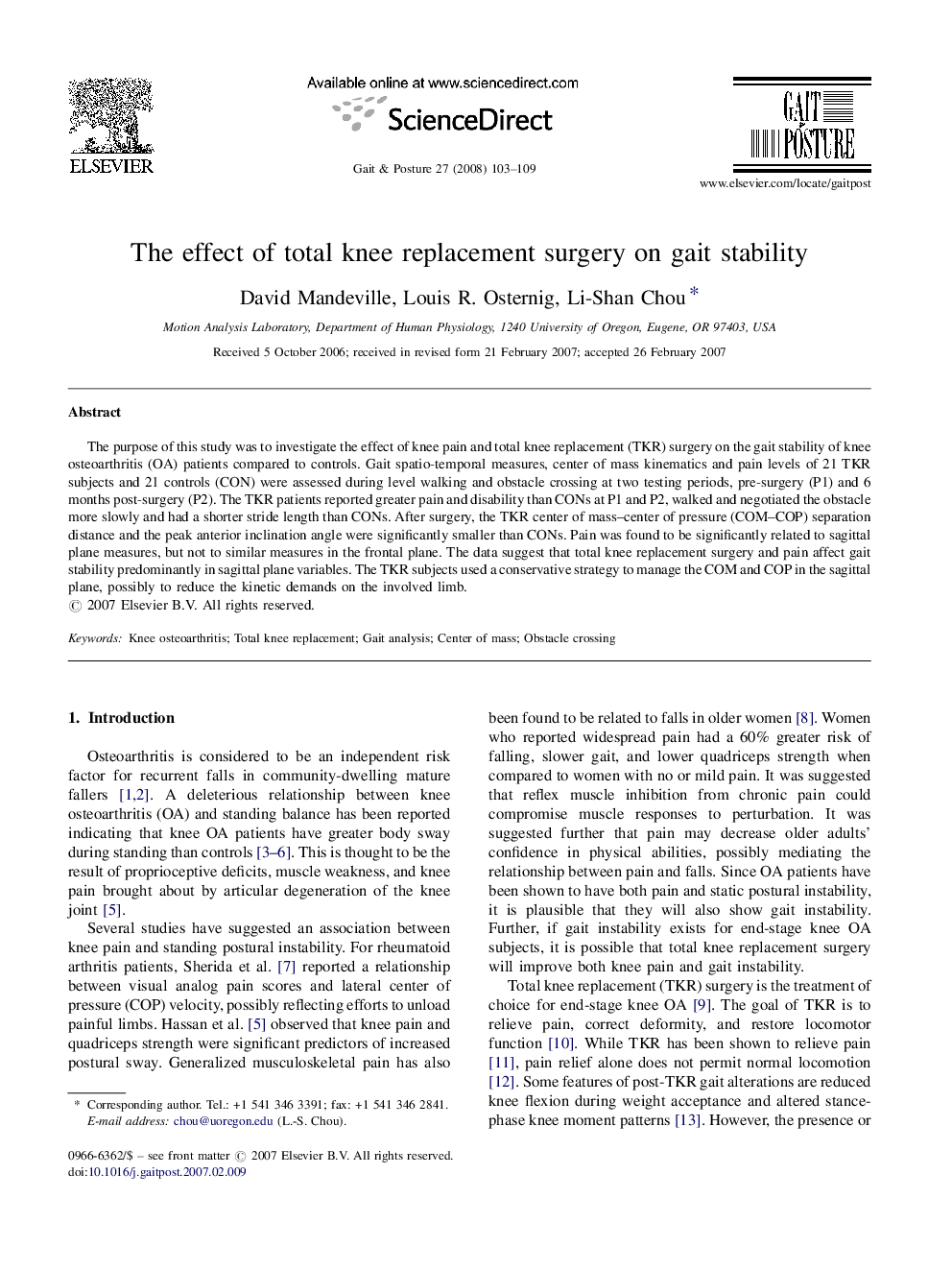| Article ID | Journal | Published Year | Pages | File Type |
|---|---|---|---|---|
| 4058313 | Gait & Posture | 2008 | 7 Pages |
The purpose of this study was to investigate the effect of knee pain and total knee replacement (TKR) surgery on the gait stability of knee osteoarthritis (OA) patients compared to controls. Gait spatio-temporal measures, center of mass kinematics and pain levels of 21 TKR subjects and 21 controls (CON) were assessed during level walking and obstacle crossing at two testing periods, pre-surgery (P1) and 6 months post-surgery (P2). The TKR patients reported greater pain and disability than CONs at P1 and P2, walked and negotiated the obstacle more slowly and had a shorter stride length than CONs. After surgery, the TKR center of mass–center of pressure (COM–COP) separation distance and the peak anterior inclination angle were significantly smaller than CONs. Pain was found to be significantly related to sagittal plane measures, but not to similar measures in the frontal plane. The data suggest that total knee replacement surgery and pain affect gait stability predominantly in sagittal plane variables. The TKR subjects used a conservative strategy to manage the COM and COP in the sagittal plane, possibly to reduce the kinetic demands on the involved limb.
